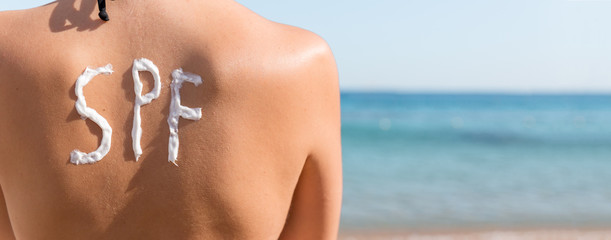Skin Show
It’s summertime in SoCal.
May 10, 2019
Southern Californians live for the summer: hot sun, more daylight, skimpy clothing, surfing and frolicking at the beach, outdoor sports, fairs and family barbecues are a few of the perks and fun activities we enjoy in our region.
However, the combination of intense sun and increased exposure can put your skin at risk for future problems including premature aging, discolorations, growths, cancers and can aggravate pre-existing disorders.
The Skinny on Skin Anatomy
Did you know your skin is the largest organ of your body? Skin, or cutaneous tissue, is primarily composed of collagen, elastic and reticular fibers that form strong net-like structures. It is comprised of three complex layers, each responsible for specific functions:
Epidermis: The topmost layer consists of three different layers that vary in thickness. The eyelids have the thinnest and the soles and palms boast the thickest shield against penetration and the invasion of inhabitant surface bacteria. This layer contains white blood cells that provide protection against infectious microbes.

Dermis: The middle layer produces a variety of structures and glands that contain a significant amount of body water and provide blood to the epidermis. The dermis also functions to regulate body temperature, secrete sweat and oils, and produces a complex system of hair follicles, capillaries, lymph vessels and nerve endings.
Subcutaneous: The bottom layer contains mostly fat tissue and produces other protective cells to provide additional
insulation and protection. Not only does skin function as an elastic shield to repel minor penetrations, it also has
impressive regeneration abilities to produce new tissues and repair damaged cells as it sheds and replaces the top layer on a daily basis.
We take our skin for granted until we get a sunburn or some other trauma that causes blistering and disruption of the layers.
The Skinny on Sunburns
Repetitive solar burns and overexposure increase the risk for the susceptibility to develop chronic dryness, irreversible blemishes and discolorations, accelerate premature aging, develop benign growths, lesions and cancerous cells. Superficial growths and cancers, e.g. squamous cell, that arise from the epidermis can be easily
removed at a visit to the clinic.
However, the more serious cancers, e.g. basal and melanoma that develop in the dermis layer, have the capability to invade surrounding tissue, including bone, and to seed to other body areas. This requires more invasive removal and sometimes adjunctive therapies.
Then, we have the melatonin factor to consider. Pigmented cells in the dermis secrete melatonin that determine skin color— more melatonin cells produce darker skin tones. Higher melatonin levels do provide additional protection against solar radiation; however, these individuals still remain susceptible to sunburns from overexposure.
The summer months are rapidly approaching bringing intense solar rays with accelerated risks for skin complications. So, let’s put some serious thought into protecting your skin as you would when choosing a new
board or swimwear.
The Skinny on Solar Protection
OK, common sense dictates to cover up, seek shade and avoid prolonged exposure to direct solar rays. However, in a gorgeous climate with endless sunshine where outdoor activities thrive, this practical advice is very difficult to follow.
Solar ultraviolet (UV) rays start to intensify midmorning, peak around early afternoon, and begin to dissipate as the sun travels towards the horizon. Protection is extremely important during the intense peak hours.
Additionally, remember that water, sand and snow surfaces reflect and intensify the rays regardless of the time of day. Kristen Van Aken, certified nurse practitioner at Sharp Rees-Stealy dermatology department, offered her advice:
“Always use a sunscreen that contains zinc, re-apply it frequently and wear broad-brim hats for the best protection. You will be glad that you did these things as your skin ages.”
Sunscreens can protect skin by absorbing, reflecting or scattering damaging UV rays. The large selection on the market can make it confusing to choose the correct formula that is best for your skin type and lifestyle.
Some facts to consider while choosing:
• Make sure the formula includes zinc for maximum protection.
• Check the sun protection factor (SPF).
It should be at least 30. Fair skin requires a higher SPF especially when planning to spend extended time outdoors.
• Use a waterproof-based formula if spending time near the water.
• Apply as instructed by the manufacturer or your healthcare provider. Put on sunscreen at least 30 minutes before you go outdoors. Re-apply at two-hour intervals and every time you go into the water.
• Remember to choose a higher SPF if traveling to hotter environments. Solar rays are more intense closer to the equator, and you can sustain a serious burn with subsequent skin damage.
• Check the expiration date. Do not use expired products and avoid storage in a hot vehicle. Expired or altered products will give a false sense of security while actually allowing more UV rays to penetrate the skin surface.
Alternate options to sunscreen include seeking shade whenever possible, and wearing broad-brimmed hats and protective clothing. Long-sleeved shirts, loose pants and sunglasses are also recommended. Wet clothes that cling
to the skin is less effective to reflect the sun.
Finally, skip tanning and consider using a topical sunless product instead. Try a patch test to check for allergic reactions, and remember to apply sunscreen first before applying the product.
So, continue to enjoy the warmer weather while using some of these tips for ultimate protection from damaging solar rays.














